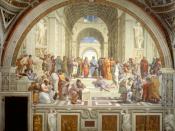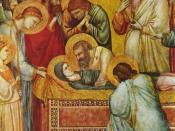The Renaissance was without a doubt the most powerful weapon that civilization has ever used to reflect and create their realistic pieces of art which represented the real humanistic spirit. There was an outstanding depiction of the Renaissance starting in Italy and then Northern parts of Europe. Anyhow, even though both the Italian Renaissance and Northern Renaissance are considered pieces of art, there were still many differences between them and also similarities which helped in the cultivation and reflection of Humanism.
To begin, differences such as in religion, ideals, and sometimes even reason of existence were evident between the two Renaissances. These differences were as a matter of fact evident based on the diverse roots of the two Renaissances. "The Northern Renaissance was distinct from the Italian Renaissance in its centralization of political power. While Italy was dominated by independent city-states, countries in central and western Europe began emerging as nation-states" ("Northern Renaissance"). These differences were crucial regarding the development of the Renaissance and the branches that got out of it, making the two Renaissances as much different as they were similar.
Similarities of course were shockingly not just similarities but same patterns of art, ideas, and beliefs. The paintings and anything worked by humanists were portrayed on the same realistic bases. "Painter Giotto di Bondone's contribution to Italian Renaissance Art was in his depiction of the concept of space, something well known to the ancient Greeks and Roman" ("Giotto di Bondone,"). Manifest of Roman and Greek ideas was obviously apparent in the way these painters worked and in the way they gave their message to the humanity.
A crucial difference between the two Renaissances was between the portrayed figures on the paintings and as a result the ideas and messages given by these paintings.


